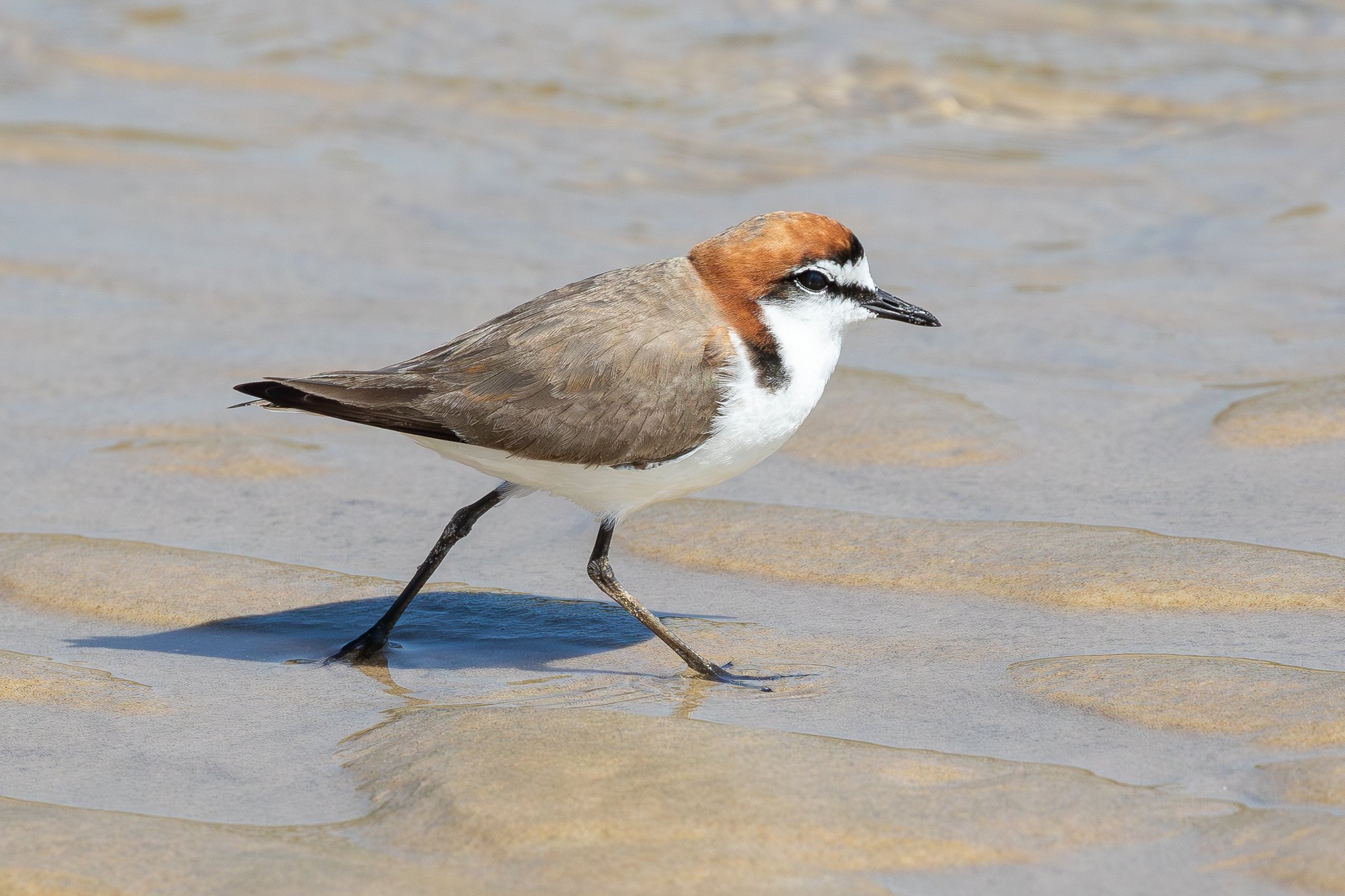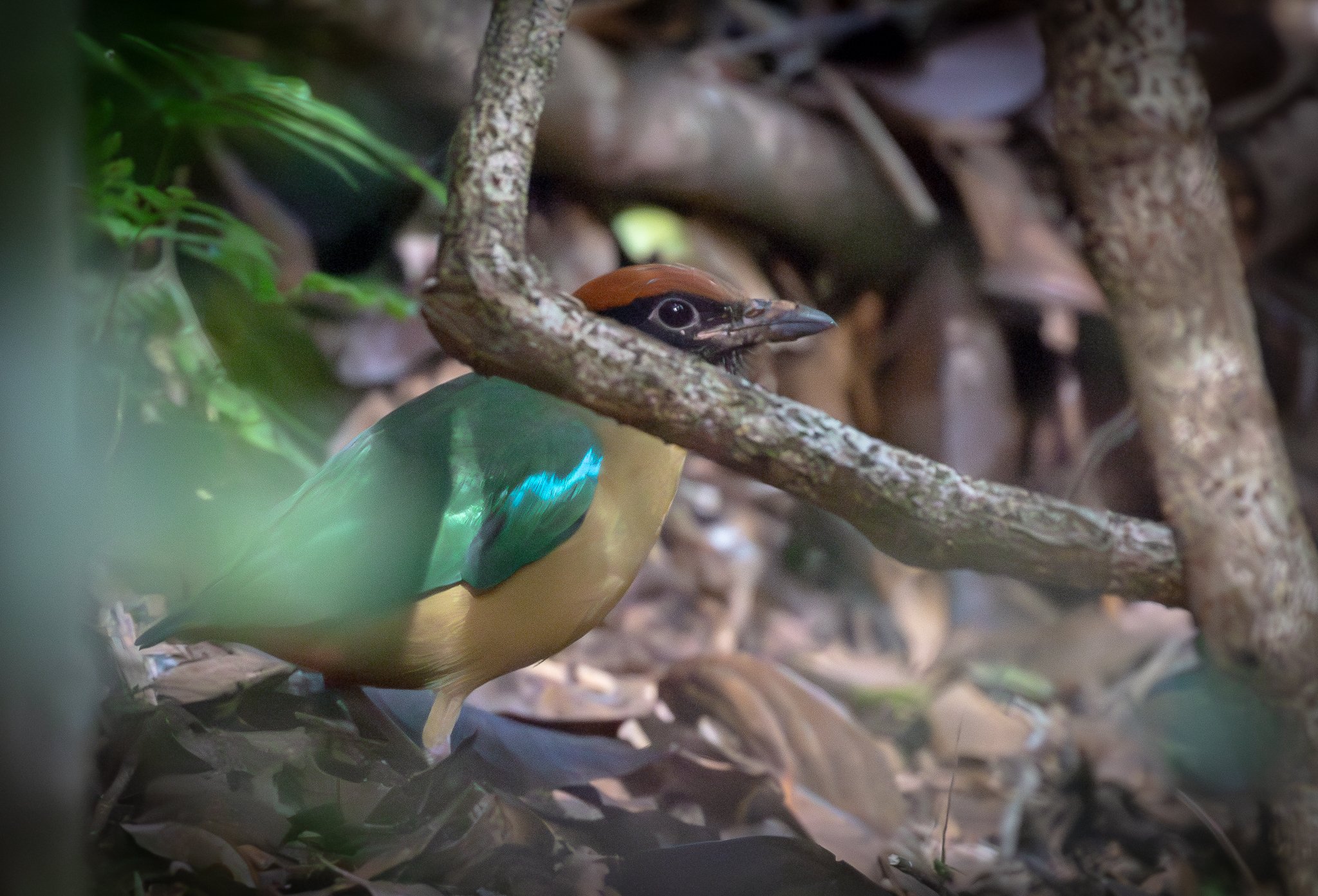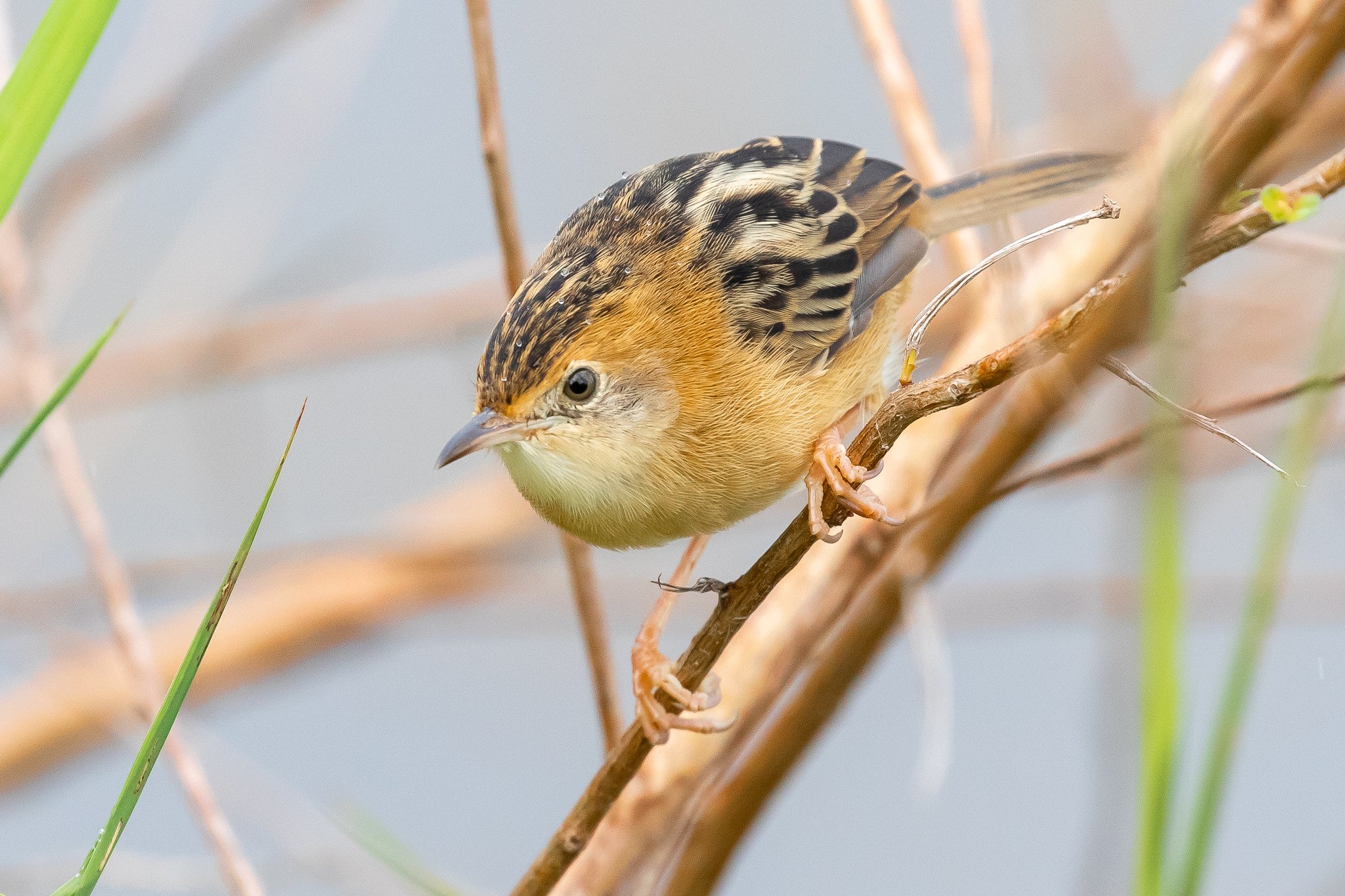Belongil Creek estuary in Byron Bay New South Wales was once a place for water birds, migrating birds and sea birds to congregate. It still accomodates an impressive range of bird species, but you would suspect that before the presence of dogs, holiday makers and electric bikes there would have been a lot more. A large roped area protects breeding Red-capped Plover. Unfortunately no sign of the Little Terns that used to breed here.
Royal Spoonbills roam the large mown grass areas behind the beach, an unecessary tidiness that gives holiday patrons a sense of security.
Though the presence of this Purple Swamphen chick is a positive sign of the area’s environmental health.
Individual birds like this egret move from spot to spot, this time chased by one of the younger beachgoers.
An Eastern Rosella feeding on nuts in a Casaurina.
Rainbow Bee-eaters perch on small beachside trees, feeding along the beach.





















































































